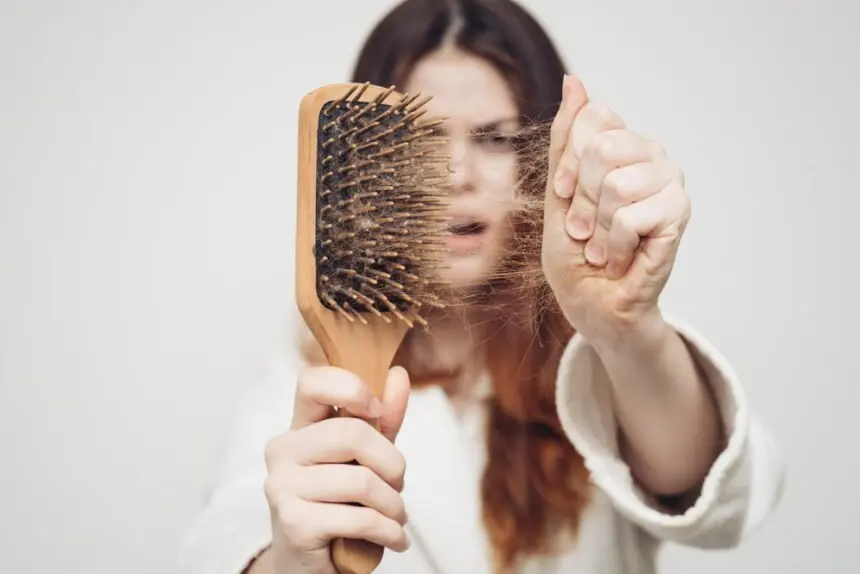It’s normal to lose about 100 hairs a day. However, excessive hair loss can be a problem.
Hair loss can be a side effect of chemotherapy, targeted therapy, radiation treatment for cancer and other health conditions. Typically, the hair usually grows back after treatment is over. But if not, your doctor may treat the state to help stimulate regrowth.
Chemotherapy
Hair loss is a common side effect of chemotherapy. The drugs used in chemotherapy kill cancer cells, but they also affect healthy tissues and cells that divide rapidly, such as blood cells in the bone marrow, cells lining the mouth and digestive tract, and hair follicles.
Hair can thin, become brittle, or fall out entirely during chemotherapy. It’s important to talk to your doctor before you start treatment about what you can expect. Some people find it helpful to seek counseling before starting chemotherapy to help them cope with hair loss and other side effects.
Fatigue is another standard chemotherapy side effect. Eating a nutritious diet with lots of protein, iron, and calories may help to manage fatigue during and after chemotherapy. Talking openly with family members and friends about your feelings about your hair loss can be helpful, too. Some people find it beneficial to use wigs or scarves during chemotherapy. Some programs can provide wigs for free. Other patients can use cooling caps to keep their scalps cool during chemotherapy.
Radiation
Hair loss from radiation usually only affects the part of the head being treated. This differs from some types of chemotherapy that cause hair loss on the whole body. Hair loss from radiation is not permanent and often re-grown after the treatment. However, in some cases, it can lead to baldness on the parts of the head that have been irradiated.
It’s important to tell your healthcare team or experts about any side effects you are having; you can always check the difference between Keeps and Hims services options. They can help prevent them or advise you on ways of managing them. For example, if you are taking cancer drugs that can cause hair loss, your doctor or nurse can tell you if your hair is likely to fall out as a side effect.
Hair Transplants
Hair transplants are an effective way to address baldness and restore your natural hairline. They can also increase your confidence, especially in the workplace. Hair transplants are a permanent procedure, and you will not need to worry about losing more hair or developing new bald spots in the future.
During a hair transplant, a surgeon removes hair from the back of your head and places it where you have thinning or balding areas. They harvest hair; they use follicular unit extraction (FUE) or the strip method. FUE takes individual hair follicles using a tiny punch, while the traditional strip method uses a scalpel to cut a long strip of skin from the back of your head, leaving a scar on the scalp.
After the surgery, you must follow your surgeon’s instructions for postprocedure care. This may include avoiding strenuous physical activity and washing your hair with special shampoos. You may experience itching or crusting on the transplanted area, but this should be temporary. You should also avoid wearing hats and pulling over shirts and jackets until your doctor says it is OK.
Steroids
Some types of steroids can cause hair loss by increasing dihydrotestosterone (DHT) levels in the body. This hormone causes the hair follicles to weaken and eventually fall out, leading to baldness. However, other steroids can stimulate hair growth and prevent thinning hair by inhibiting DHT.
Steroids are also used to treat certain types of alopecia. Depending on the type of alopecia, doctors may recommend different treatment options, including topical or intralesional corticosteroids. These are injected into the skin using a fine needle. They are most effective for treating alopecia areata and can help regenerate small patches of hair in many patients.
The injections are usually not painful. Some people experience a slight discomfort at the first injection, but the pain decreases with each treatment. The steroid used is absorbed into the bloodstream and can cause side effects such as increased white blood cell count, high blood pressure, changes to the menstrual cycle, and bone thinning. However, it is essential to remember that these side effects are reversible and only temporary once the steroids have been stopped.
Antifungal Medications
Fungi are microscopic organisms living in and on the body, including your nails, scalp, and skin. Most people have no problems with fungi, but when the balance between healthy cells and fungi is upset—usually by diseases or treatments that suppress your immune system–fungal infections can occur in many different body parts.
The condition known as tinea capitis, or scalp ringworm, usually requires an antifungal medication that is taken orally daily. A dermatologist will prescribe ketoconazole, ciclopirox, or terbinafine (part of the azole family of medications). The prescription-strength drugs work to kill the fungi and help them stop growing.
Fungi may also cause a yeast infection or dermatophyte infection that shows up on the skin and often affects oily areas of the body, like the scalp, eyebrows, and mustache or beard area. A doctor may prescribe topical antifungal or oral antibiotics or steroid medications. Antifungal medications work to kill or prevent fungi from growing and spreading by blocking the fungal cell membrane or stopping their ability to absorb nutrients.







Hello!! My name is Annabella
I love to eat, travel, and eat some more! I am married to the man of my dreams and have a beautiful little girl whose smiles can brighten anyone’s day!